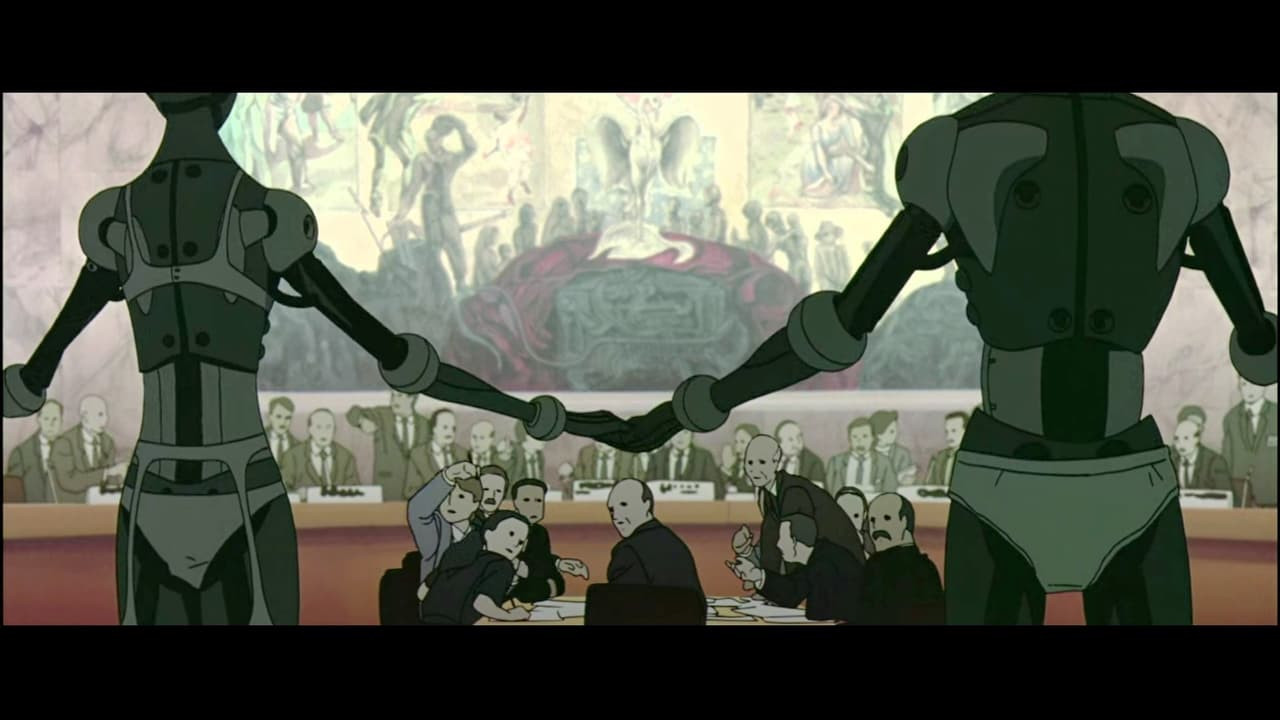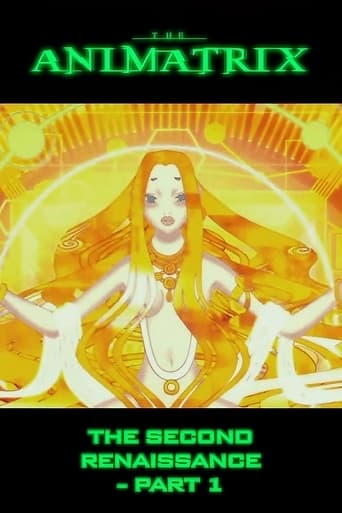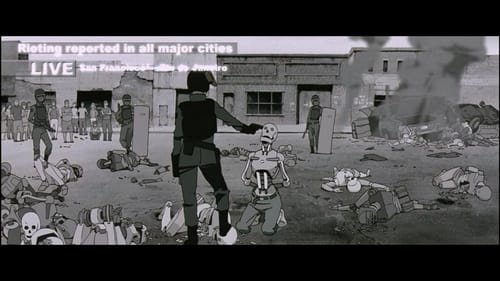


Very well executed
... View MoreAn Exercise In Nonsense
... View MoreIt's hard to see any effort in the film. There's no comedy to speak of, no real drama and, worst of all.
... View MoreThere are moments in this movie where the great movie it could've been peek out... They're fleeting, here, but they're worth savoring, and they happen often enough to make it worth your while.
... View MoreThis is the second Animatrix short, and the first of them to be what one could call 'artistic'. It contains a lot of references, metaphors and symbols in the dense amount of material, especially with a running time of 9 minutes. I've heard some complaints that this is "anti-human", or tries to direct hate towards man, for their "sins against machine". I don't think that's true; it merely uses the robots to show us, that as humans, we aren't particularly accepting or open-minded towards anyone different from ourselves. I'd say it does a great job of that. The plot is good... it plays as a historical document, recounting what led to one of the main conflicts in the trilogy. Thus it holds clips from fictional news reports and the like. The voice acting is very good, if there is not a lot of it. The animation is nice, and the use of color, in spite of the usually realistic drawing style, makes it more open to do the smooth transitions and other surreal imagery. This has several bits of strong violence and disturbing visuals, as well as a little nudity. The disc holds a commentary, not in English but subtitled, and worth a listen/read. There is also a well-done and informative making of, based on both parts, so I would advise watching it after seeing the next one, as well. I recommend this to anyone who enjoys the Matrix universe, and/or science fiction in general. 8/10
... View MoreThe Second Renaissance, part 1 let's us show how the machines first revolted against the humans. It all starts of with a single case, in which the machines claim that they have a right to live as well, while the humans state a robot is something they own and therefore can do anything with they want.Although an interesting premise, the story gets really silly from then on with (violent!) riots between the robots and mankind. Somehow it doesn't seem right, as another reviewer points it, it's all a little too clever.The animatrix stories that stay close to the core of the matrix (in particular Osiris) work for the best. As for Second Renaissance Part 1, I'd say it's too violent and too silly. 4/10.
... View MoreThe first time you see The Second Renaissance it may look boring. Look at it at least twice and definitely watch part 2. It will change your view of the matrix. Are the human people the ones who started the war ? Is AI a bad thing ?
... View MoreThis is part one of a short animation clip showing the history of the Matrix, the war between man and machine that resulted in the eventual creation of the Matrix. The animation is part Japanese anime, part contemporary american animation, and is very well made, considering the excellent directors behind the movie. It shows the initial development of AI and the exploitation of the machines by Man, until the day they rebelled...
... View More